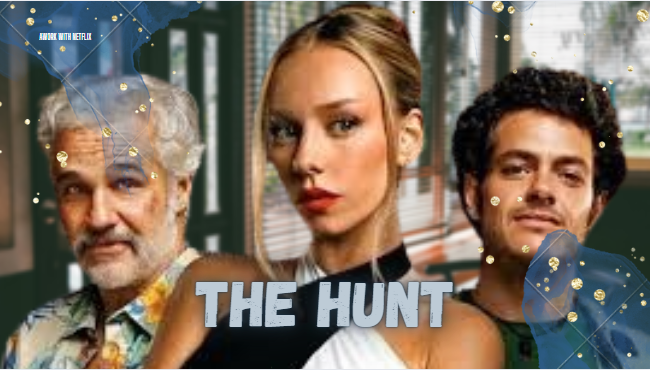
“The Hunt: The concept of the hunt is as old as humanity itself. From the earliest moments of human existence, the chase has been central to survival. In ancient times, it meant tracking and capturing prey, securing food, and ensuring the survival of one’s tribe or family. In the modern world, while the hunt may no longer be necessary for survival in a literal sense, its symbolism persists.
The hunt represents a struggle against nature, a test of physical and mental strength, and an opportunity to confront the primal forces within us. In this gripping tale of survival and pursuit, we explore the human fascination with the chase. From the tense moments before a hunt begins to the heart-racing action during the chase, we examine what it is that drives us to seek out this perilous thrill. The chase is more than just a pursuit of prey—whether animal or human—it is a reflection of the human condition, our innate desire to conquer adversity and assert dominance over the elements.
The Hunt Begins: The Call of the Wild
For millennia, hunting was the very essence of survival. Early humans, armed only with rudimentary tools and weapons, would set off into the wilderness in search of food. The thrill of the chase was not just an exhilarating physical activity; it was the difference between life and death. Every successful hunt could mean the survival of an entire community, while failure might result in starvation. But the hunt was never purely practical. As humans developed their tools, so too did they develop their understanding of the hunt’s deeper allure. The chase became an exercise not only in survival but in skill, strategy, and mastery over one’s environment.
A successful hunter was revered, not only for his ability to provide but for his tactical knowledge, physical prowess, and mental acuity. In many cultures, hunting was a rite of passage, a test to prove one’s courage, resilience, and readiness to take on life’s challenges. Today, while hunting is no longer essential for sustenance in most parts of the world, it still serves as an avenue for people to reconnect with their primal instincts.

Whether through sports hunting, adventure travel, or survival training, many people seek out the thrill of the chase as a way to step away from the comforts of modern life and experience the rawness of nature. But hunting is not just an activity—it is a metaphor for the challenges and obstacles we face in our lives.
The Chase: Pursuit of Perfection
The chase itself is often the most thrilling part of the hunt. The pursuit is more than just running after prey or a target—it is a battle of wits, an adrenaline-charged race against time. For the hunter or survivor, every step taken in pursuit is a step closer to victory, but also one step closer to failure. The tension is palpable, the stakes are high, and the reward—if successful—can be immense. In its most basic form, the chase is a contest of speed and stamina, but it is also a test of patience, cunning, and adaptability.
The prey, whether animal or human, knows that its survival is at risk. As it flees, it will take every opportunity to outwit or outrun its pursuers. The predator, on the other hand, must maintain its focus, keeping pace with the prey, using the landscape to its advantage, and staying mentally sharp. The chase is often as much about psychological fortitude as it is about physical strength. Both predator and prey know that they must stay focused on the task at hand, but there are moments of doubt, fear, and uncertainty.
The predator might wonder if it is capable of catching its prey, while the prey might wonder if it can outrun its pursuer long enough to escape. One of the most captivating aspects of the chase is the uncertainty. In many cases, the outcome is not decided by the speed or strength of the participants but by the strategy they employ. A successful chase is a result of careful planning, quick thinking, and an understanding of the terrain. The hunt is a living chess game, where every move is critical, and every decision could alter the outcome.

Survival: The Real Prize
At its core, the chase is an exercise in survival. Whether we are talking about an animal running from a predator or a human running from danger, survival is the ultimate goal. The stakes are often high, and every choice made during the chase can determine whether one lives or dies. For the prey, survival is a matter of instinct. It is about avoiding the predator, finding shelter, and maintaining the stamina to keep running. The prey must remain alert, constantly scanning for signs of the hunter, using its environment to hide or escape.
The predator, however, is motivated not just by the need to survive but by the need to capture and overpower. It must remain relentless in its pursuit, keeping its target in sight while calculating its next move. For humans, survival is both a physical and mental challenge. A person’s ability to endure harsh conditions, outthink danger, and adapt to changing situations often determines whether they live or die. In many ways, the human chase mirrors the broader experience of survival in life.
We are constantly faced with challenges, whether personal, professional, or emotional, and how we choose to respond determines our success or failure. Survival in the wild is a harsh teacher. Those who engage in extreme survival challenges—whether in remote wilderness areas or urban environments—know that every moment can be a battle. They must deal with hunger, thirst, fatigue, and injury, all while navigating an environment that is indifferent to their existence. The chase, in this context, is not just about evading a predator but about conquering the elements and the self-doubt that can arise in moments of crisis.

The Human Element: The Hunt for Meaning
While the physical aspects of the chase are undeniably compelling, there is an emotional and psychological aspect that cannot be ignored. The hunt often serves as a metaphor for the broader human experience—the search for meaning, purpose, and identity. Just as the hunter or the prey is driven by an internal force to achieve their goal, so too are humans often propelled by an instinctive need to pursue something greater than themselves. In literature and film, the chase often serves as a narrative device to explore themes of heroism, morality, and existential struggle.
Consider the iconic story of Moby Dick, where Captain Ahab’s relentless pursuit of the white whale symbolizes his quest for meaning and revenge. Ahab’s chase is not just physical—it is deeply emotional and philosophical. The chase, in this sense, is about confronting the unknown, about testing the limits of human endurance and willpower. The thrill of the chase in human life is often tied to personal ambitions and goals. Whether in the pursuit of wealth, success, or self-improvement, the chase represents the drive to achieve something meaningful.
obstacles faced along the way—competition, doubt, failure—only serve to intensify the pursuit. It is not the end result that matters most, but the act of chasing itself. The chase forces us to confront our limitations, question our motivations, and push ourselves further than we ever thought possible.

The End of the Hunt: Reflection and Consequences
Every hunt, whether in nature or in life, comes to an end. The prey may be caught, the hunter may fail, or the participants may reach a standoff. Regardless of the outcome, the consequences of the chase linger long after the pursuit has ended. In some cases, the hunter or the prey will walk away victorious, having survived the challenge. In other instances, they will be left with scars—physical, emotional, or psychological—that remind them of the intense nature of the chase. The end of the hunt often brings with it a moment of reflection.
What was learned from the experience? Was it worth the risk? The survivors, whether predator or prey, will carry the lessons of the chase with them long after the final step has been taken. Even in defeat, there is often a sense of growth—a realization that survival, in whatever form it takes, is a triumph in itself. For the hunter or the pursuer, the end of the chase may lead to a sense of satisfaction and fulfillment.
The thrill of success is tempered by the understanding that the chase was not just about catching the prey, but about conquering the challenges that arose along the way. The hunt, after all, is as much about self-discovery as it is about external conquest.
Conclusion: The Everlasting Thrill
The thrill of the chase is universal. Whether in the wilds of nature or the struggles of daily life, the pursuit of survival, dominance, or meaning is an integral part of the human experience. The chase tests us, pushes us to our limits, and forces us to confront the unknown. It is a reminder that, no matter how much we evolve or how far we progress, the basic instincts of survival, the desire to overcome, and the pursuit of something greater will always be with us.
As long as there are obstacles to overcome, challenges to face, and goals to achieve, the chase will remain a thrilling and indispensable part of life. Whether literal or metaphorical, it is through the chase that we find meaning, test our strength, and ultimately survive. The hunt is never truly over—it is a never-ending pursuit of mastery over ourselves and the world around us.





5 thoughts on ““The Hunt: A Thrilling Pursuit of Survival and Justice””